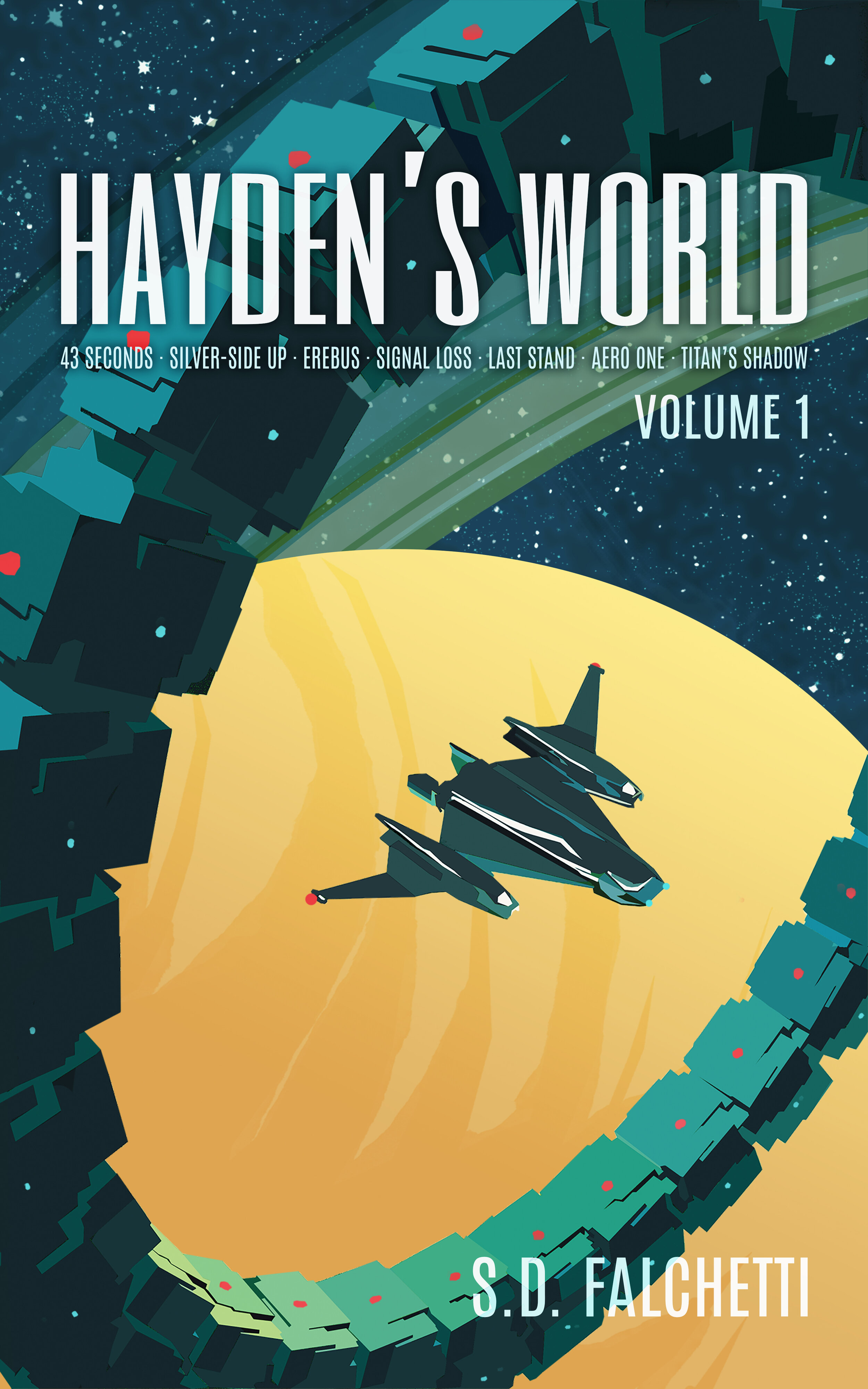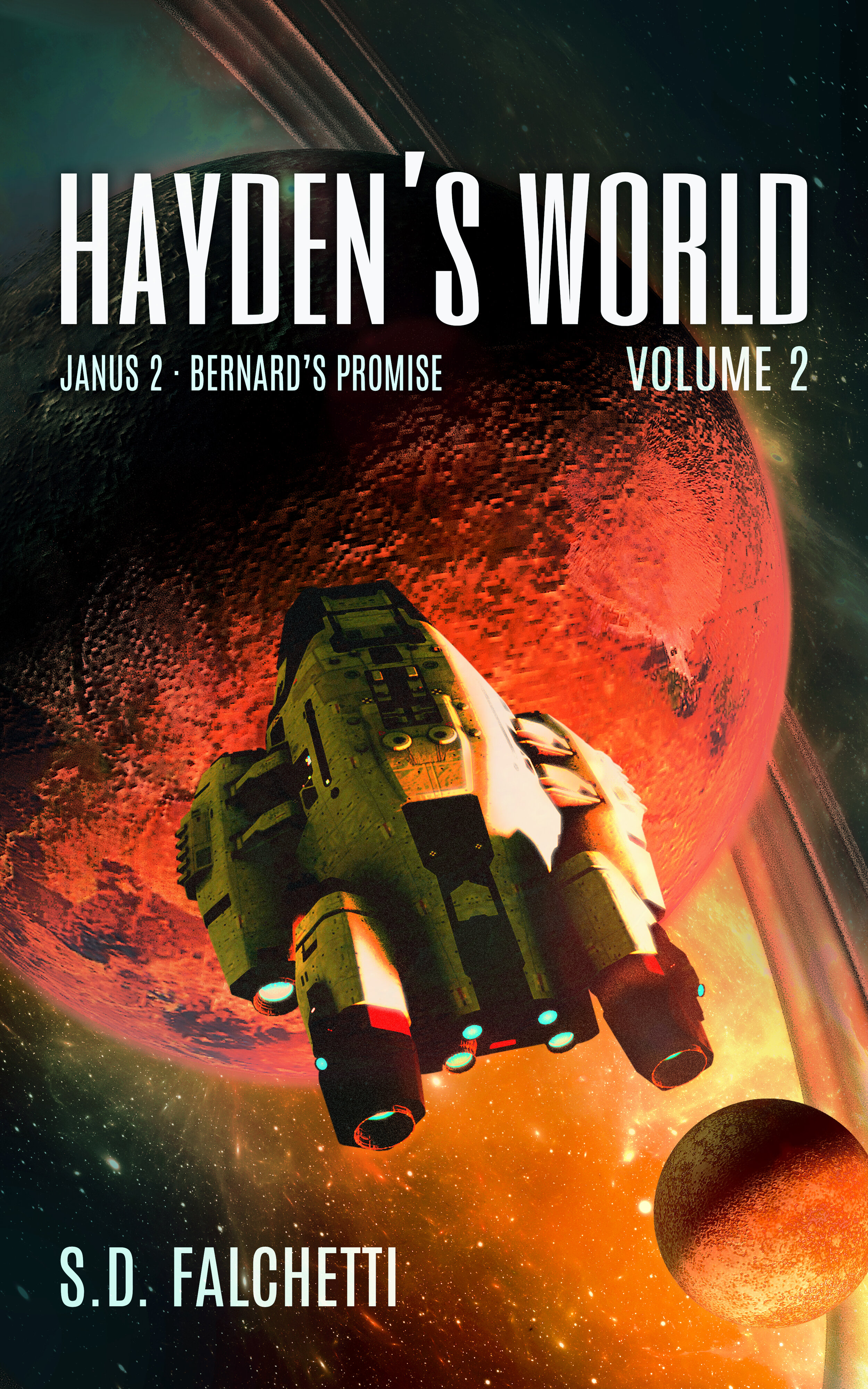Andy Weir is an indie author’s hero. When he originally wrote The Martian, he published it one chapter at a time on his blog for his friends to read. His friends really enjoyed it, but some found it hard to read on their computer screens and asked that he publish it on Kindle. He originally planned to give it away, but Amazon requires you to sell ebooks for a minimum of 99 cents, so that’s what he did. As it turns out, many people really enjoyed The Martian, and, next thing you know, Matt Damon is playing his main character in a blockbuster.
I stumbled upon The Martian on Goodreads. Based upon the reviews, it was a very polarizing story. Either people enjoyed the MacGyver-like survival science or they disliked a science lesson wrapped in a story. As a hard science fiction writer myself, I can sympathize with this problem. I’ve gotten my share of one-star reviews from readers expecting lightsabers and dogfights who were unhappy with chapters on planetary science and alien biology.
It’s hard not to know the setup of The Martian by now, but if you haven’t read it, it’s set in a near-future Mars mission where the crew abandons their Mars habitat during a severe storm. During their evacuation, one of their crew is killed and they are forced to leave his body behind as they blast off for Earth. What they don’t know is that he’s still alive, it will be four years before anyone can return for him, and he only has thirty days of food. Fortunately, the left-behind astronaut is the mission botanist and he engineers a way to make food for himself and contact Earth to orchestrate a retrieval. Faced with a series of impossible survival problems, he famously says, “I’m going to have to science the shit out of this.”
I greatly enjoyed The Martian’s problem solving. It was like watching MacGyver escape from a vault by freezing some water into the lock. The parts of the writing I initially didn’t enjoy were the characters and dialogue. The trapped astronaut, Mark Watney, spoke and acted like a texting fourteen-year-old boy. It was hard to believe he was a NASA astronaut. For example, when Watney connects live with Earth and is told his text messages are being seen by everyone, he types “Boobs!” and snickers. In general, Watney starts the book as a very annoying character; however, a funny thing happens to the reader as he gets to know Watney.
I recently watched the Amazon comedy series Ted Lasso, which is about an American football coach who moves to England to coach a Bad-News-Bears soccer team. Everyone is hostile to the idea, but Ted is perhaps the world’s nicest and most optimistic man, winning over the hearts of everyone he encounters and transforming his team of I’s into a team of We’s. The opening credits are the best analogy for the series. In them, Ted sits down in blue bleacher seats, and, one-by-one, they turn red around him.
Mark Watney is like this. He faces so many impossible challenges with his high spirits and can-do attitude that you, too, can’t help but root for him. It’s the overwhelming theme of the story: human ingenuity, perseverance and hope will prevail.
Weir’s second book, Artemis, was set on the Moon. I briefly hoped it wasn’t about someone being left behind on the Moon (it wasn’t), but the actual plot faltered and lost the magic of the Martian. It follows Jasmine Bashara around a moon base in the 2080’s (same year as the Hayden’s World series!) as she becomes entangled in a conspiracy to control the base. What I recall about the story is that the descriptions of the moon base and lunar surface were interesting, but the plot itself didn’t engage me.
Weir’s most recent book, Project Hail Mary, is a return to the formula that made The Martian so successful. It once again creates a main character who is completely cut off from humanity who needs to solve a series of technical problems to succeed. The premise is that Earth’s sun is mysteriously dimming and soon all life will perish. The reason for the dimming is a microscopic spacefaring life form that flies in an arc between Venus and the Sun, stealing a little energy from the Sun with each trip. All of Earth’s neighboring stars show the same dimming except for Tau Ceti. So, Earth builds an interstellar mission to Tau Ceti to understand why that star is unaffected and hopefully bring a solution back to Earth.
The story starts out a bit cheesy with an astronaut with amnesia who awakens upon a ship. It’s a narrative construct to dole out back story and it has a soap-opera plot feel to it. Once the amnesia wears off and the mission is revealed, the story picks up. The main character, Ryland Grace, is the sole survivor of the three-man mission. The technology is current day’s and the way Earth constructs a ship capable of reaching Tau Ceti in only a few years is clever. Where the story really takes off, however, is when Ryland arrives at Tau Ceti and discovers another alien ship is also there. Similar to Ryland’s situation, the alien is the sole survivor of his mission and is also searching for a cure for his home world’s dimming star.
Weir clearly put a lot of thought into his alien and I appreciate that it is, indeed, alien. You’ll find no Star Trek “human with a nose wrinkle” vision of aliens here. The human and alien environments are so different that each would be nearly instantly lethal to its counterpart. The alien lives on a Venus-like super Earth with intense pressure, heat, and gravity. Because it looks like it’s made of rock, Ryland nicknames it Rocky. Fortunately for Ryland, Rocky acts very human. He carries tools, wears clothes, is intensely curious, wants to work together, and is even a bit sarcastic. The two quickly develop a way to communicate and in no time are speaking to each other with the assistance of a laptop.
The Rocky/Ryland partnership is the gem of the story. Rocky has a distinct personality and is very gung ho, and this taps into the optimism theme that permeated The Martian. At times he’s a bit too human, doing things like shaking his first in anger and pointing to a clock when Ryland is late, but it’s forgivable. After all, we need to relate to Rocky to like him, and if he were a completely inhuman rock that would be difficult.
I thoroughly enjoyed the partnership’s fascination and curiously with each other. Rocky is just as amazed that humans can breathe dangerous oxygen and “hear light” with their eyes as Ryland is that Rocky doesn’t need to breathe and has a body temperature in the hundreds of degrees. Surprisingly, Rocky’s home world is lower-tech than Earth’s. They have no computers, don’t understand relatively, and have still managed to build an interstellar ship using math they do in their heads. It’s a bit like watching a bunch of 60s NASA engineers do rocket math with slide rules and still plop a craft down on the Moon. It’s great fun seeing Rocky and Ryland compare notes. “Humans are weird,” Rocky states more than once.
I did cheer when the book had its “science the shit out of it” moment with this quote spoken by Rocky in broken English:
“You ship has more science than my ship. Better science. I bring my things into you ship. Release tunnel. You make you ship spin for science. You and me science how to kill Astrophage together. Save Earth. Save Erid. This is good plan, question?”
“Uh…yes! Good plan! But what about your ship?” I tap his xenonite bubble. “Human science can’t make xenonite. Xenonite is stronger than anything humans have.”
“I bring materials to make xenonite. Can make any shape.”
“Understand,” I say. “You want to get your things now?”
“Yes!”
I’ve gone from “sole-surviving space explorer” to “guy with wacky new roommate.” It’ll be interesting to see how this plays out.
Weir, Andy. Project Hail Mary (p. 254). Random House Publishing Group. Kindle Edition.
Ryland is also toned down versus The Martian’s Watney. He’s played as a nice guy in a generally desperate situation who doesn’t give up. Admirably, he makes a genuine friendship with Rocky and is willing to risk his life to save him, as Rocky is willing to risk his to save Ryland.
I should note that, similar to The Martian, the story alternates between scenes with the isolated astronaut and scenes back on Earth. The Earth scenes are all flashbacks, dealing out chunks of story about how the Sun’s problem was detected and how the starship was built. While necessary, I found them not very engaging and often leafed through them. The real story is Rocky and Ryland’s. Weir, like many hard science fiction authors (myself included), wants to ensure the reader knows how everything works and fits together. Really what engages the reader is the Rocky/Ryland friendship and their teamwork. There’s a bit of a writing lesson to be learned there for character over world building.
I enjoyed Project Hail Mary and I think Weir has another winner. Be sure to check it out if you enjoyed The Martian.
When I’m not flying the virtual skies, I’m the sci-fi author of the Hayden’s World series. If you love exploration and adventure, be sure to check it out.



